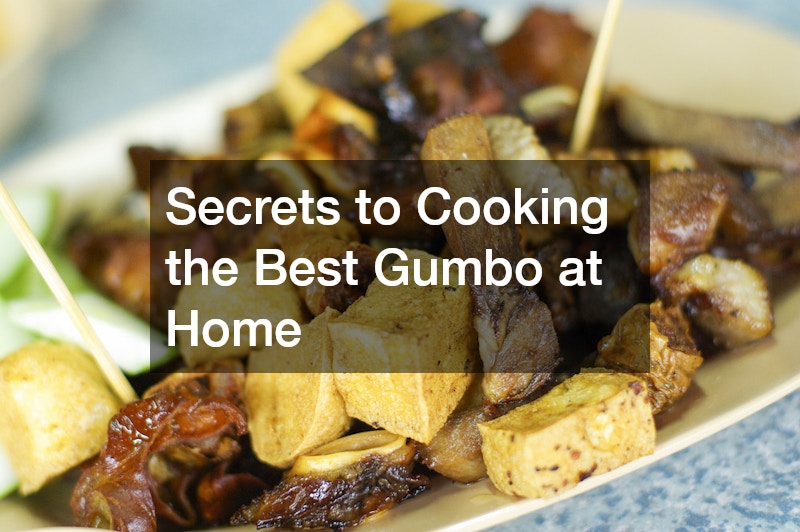
Secrets to Cooking the Best Gumbo at Home

Discover the history and cultural significance of gumbo, a beloved dish from Louisiana. Learn about the essential elements that make gumbo a timeless classic, and prepare to embark on a flavor-packed culinary adventure in your own kitchen. In this article, we will explore the art and science of making gumbo, equipping you with the knowledge and techniques to craft this iconic dish with confidence and flair.
The Role of Roux in Gumbo
Roux is the foundation of a good gumbo, serving both as a thickening agent and a flavor enhancer. Made by slowly cooking flour and fat, typically butter or oil, until it reaches a rich, brown hue, roux provides gumbo with its characteristic depth.
The key to a perfectly browned roux is patience; stirring consistently is crucial to prevent burning, and mastering this technique will elevate your gumbo to a new level.
A well-made roux should resemble melted chocolate in its color and have a nutty aroma that permeates your kitchen. This classic culinary element distinguishes authentic gumbo from less traditional versions and is essential for achieving the desired consistency. By dedicating time and attention to this initial step, you lay the foundation for a robust, flavorful pot of gumbo.
The Importance of the Right Stock
The stock forms the soul of the gumbo, imbuing it with savory undertones and body. Many traditional recipes opt for chicken or seafood stock, or a combination thereof, to enhance the flavor profile. When selecting your stock, consider the types of proteins you’ll be using; complementary flavors will enhance the complex taste of the gumbo.
Homemade stock, simmered from bones and vegetable scraps, offers a depth that store-bought versions can seldom match. This extra step of preparing stock from scratch allows you to control the flavors, infusing the gumbo with subtle nuances that contribute to its overall richness. However, quality store-bought stocks are convenient alternatives if time is a constraint.
Balancing Thickness with Filé and Okra
Filé powder and okra are traditional thickeners that impart unique flavors and textures to gumbo. Filé powder, made from ground sassafras leaves, adds an earthy undertone that enhances the dish’s complexity. It’s best to incorporate filé towards the end of cooking or even as a garnish, as its thickening ability diminishes with prolonged heat exposure.
On the other hand, okra not only thickens but also contributes a subtle, distinct taste when cooked within the gumbo. The naturally gelatinous properties of sliced okra help maintain the robustness of the soup’s base. However, the inclusion of okra should be balanced carefully; excessively prolonged cooking can lead to a mushy texture.
Deciding Between Chicken, Sausage, and Seafood
Choosing the right proteins for your gumbo is an integral decision that influences the overall taste and regional authenticity. Traditional gumbo often features a mix of ingredients like chicken, sausage, and seafood, each bringing its own flavor profile to the dish. Chicken provides a mild taste that serves as a base, while sausages, particularly andouille, introduce a spicy, smoky flavor.
Seafood gumbos offer a taste of the Gulf, with shrimp, crab, and even oysters lending their briny richness to the pot. When selecting proteins, consider the balance of flavors and the desired depth of the gumbo. Depending on regional variations and personal tastes, some prefer a seafood-centric gumbo, while others favor the heartiness of chicken and sausage.
Preparing Your Proteins for Maximum Flavor
Proper preparation and seasoning of proteins can significantly enhance the taste of your gumbo. Chicken, for example, benefits from being browned first in a separate pan to lock in moisture and add a layer of smoky complexity. Sausage is typically pre-sliced and browned to release its spices into the dish, enriching the gumbo’s base.
When working with seafood, careful deveining and de-shelling are essential steps to maintain freshness and texture. Marinades of lemon and herbs can embellish the natural flavors of shrimp or crab. These preparation techniques ensure that each bite delivers the vibrant, savory notes gumbo is celebrated for.
Enhancing Flavor with Fresh Herbs
The addition of fresh herbs as a finishing touch imparts a fresh aroma and dimension of flavor to your gumbo. Herbs such as parsley and green onions complement the savory base by adding brightness and contrast. They should be added in the final minutes of cooking to retain their fresh flavor and vibrant color.
With these secrets to crafting the best gumbo at home, you’ll be equipped to create a dish that’s rich, flavorful, and highly satisfying. Embrace the process, cherish the journey, and enjoy the delicious results of your culinary efforts. By understanding the importance of each component and balancing flavors and textures meticulously, you’ll create a gumbo that pays homage to its heritage while reflecting your own personal touch.



